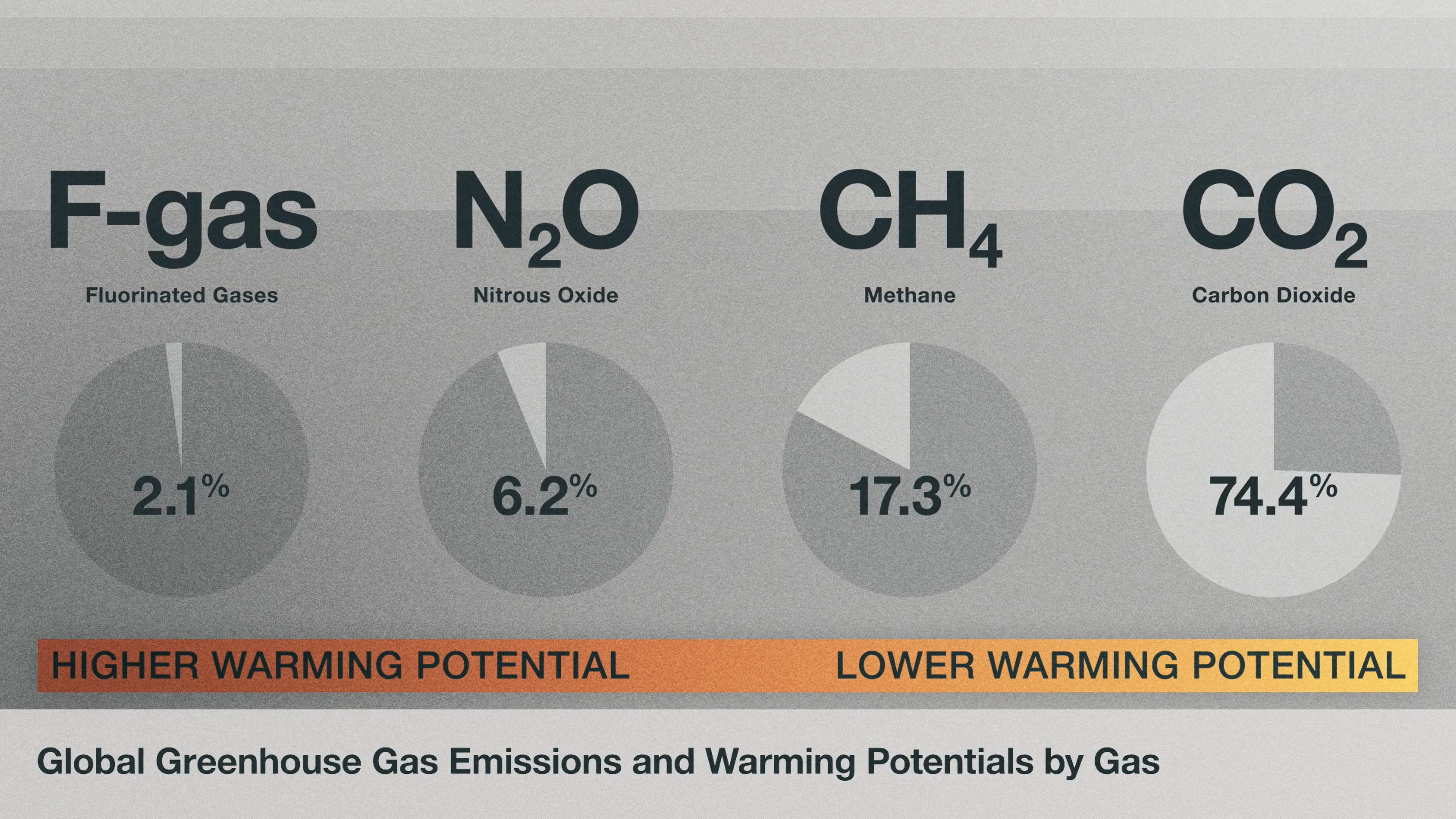Episode Transcript
In 2021, CO2 emissions reached more than 40 gigatons CO2, a staggering weight. And that’s just CO2. If we count all greenhouse gases, 2021 global emissions reached more than 55 gigatons of CO2 warming equivalent, which is abbreviated GtCO2e [1].
40 gigatonnes of carbon dioxide a year, but more than 55 gigatonnes of carbon dioxide equivalent.
What, exactly, does carbon dioxide equivalent mean?

Carbon dioxide represents a significant majority of greenhouse gas emissions. 75% by weight [2]. But other greenhouse gases – methane, nitrous oxide, and fluorinated gases – have way more warming potential than CO2 [3]. That is, they are like a heavier blanket, trapping more heat in the atmosphere.
Two factors impact the global warming potential of a gas:
- it’s ability to trap heat, and
- the length of time it stays in the atmosphere [4].
While CO2 might stay in the atmosphere for hundreds or thousands of years, methane will last only 10 years or so. So how do we compare CO2 and methane emissions if they persist for different periods of time in the atmosphere?
We have to look at them over different time scales. So, the global warming potential of a gas is described with a time period, such as the ‘100-year global warming potential’, or the ;20-year global warming potential’.
For example, as I mentioned, methane is a much thicker blanket – trapping much more heat – than Co2. But, it only stays in the atmosphere for 10 to 12 years. So if you measure the warming potential of methane in over short period of time, say 20 years, it is 85x more heat-trapping than CO2. But, if you measure the warming potential of methane after 100 years, it is only about 25x worse than CO2 [3].
Put another way, 1kg of methane released into the atmosphere has the equivalent warming potential of releasing 85 kg of CO2, if measured in 20 years, but only 25 kg of CO2 if measured in 100 years. The 20-year global warming potential of methane is 85 kg CO2-equivalent. The 100-year global warming potential of methane is 25 kg CO2 equivalent [5].
Nitrous oxide stays in the atmosphere for more than 100 years, like CO2. So whether measured at 20 years, or 100 years, 1 kg of nitrous oxide emissions has the equivalent warming potential of nearly 300 kg of CO2 emissions[5]!
Fluorinated gases are even worse! Luckily there are much less of them [5].

Carbon dioxide equivalents are typically reported using a 100-year global warming potential. Therefore, the 55 gigatonnes of CO2 equivalent of emissions released in 2021 that I reported at the beginning of this episode, was assuming a 100-year global warming potential.
In summary, carbon dioxide equivalent is a simplified way to talk about the collective impact of human-caused greenhouse gas emissions. It is a measure of how much CO2 would have to be released to have an equivalent warming impact to the amounts of other greenhouse gases.
If you’re curious where these different gases come from, watch our video Episode 1.2 – How dirty are we?.
Check out all our videos and podcast episodes at ClimateNow.com for in-depth analysis of the science, technology, economics and policy behind climate change and the energy transition.
Thanks, and see you next time!



